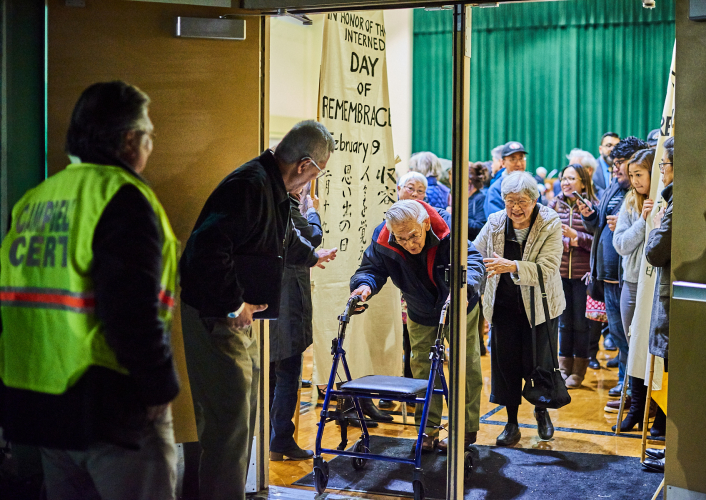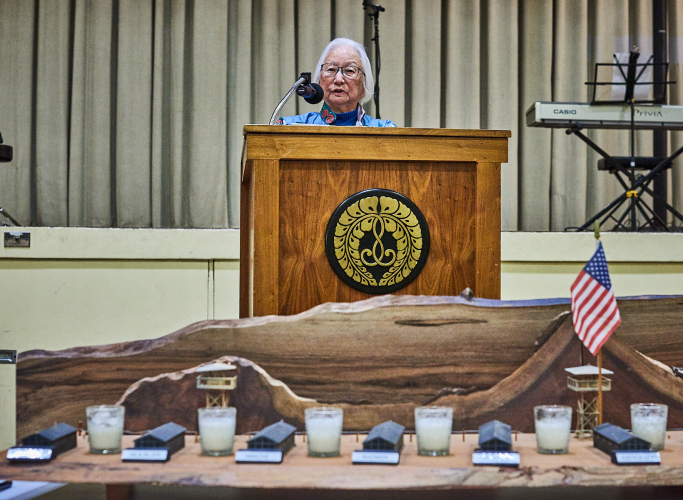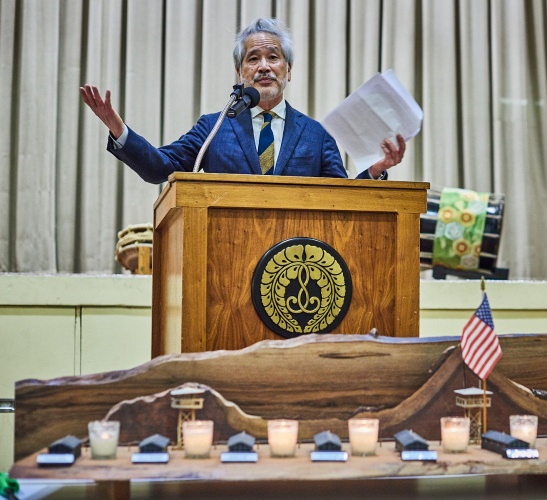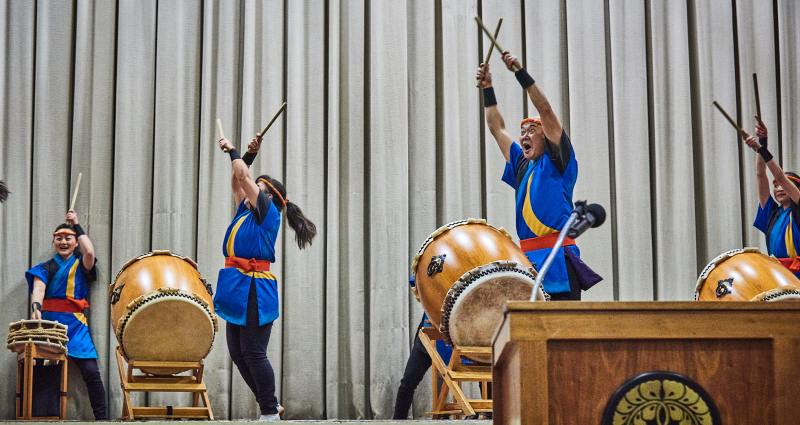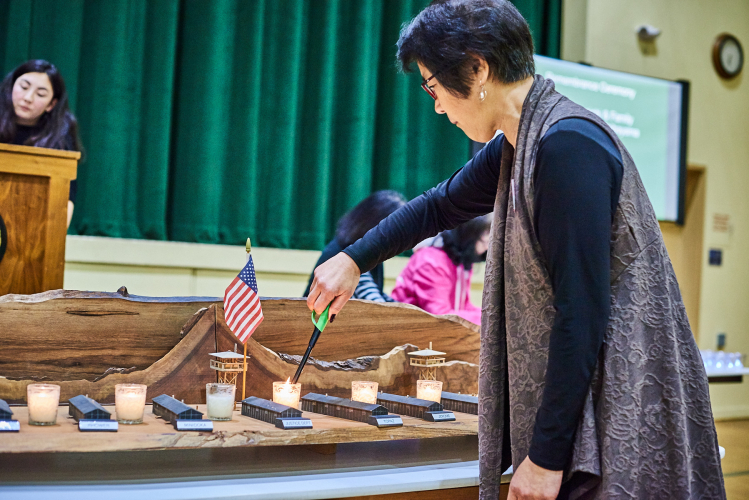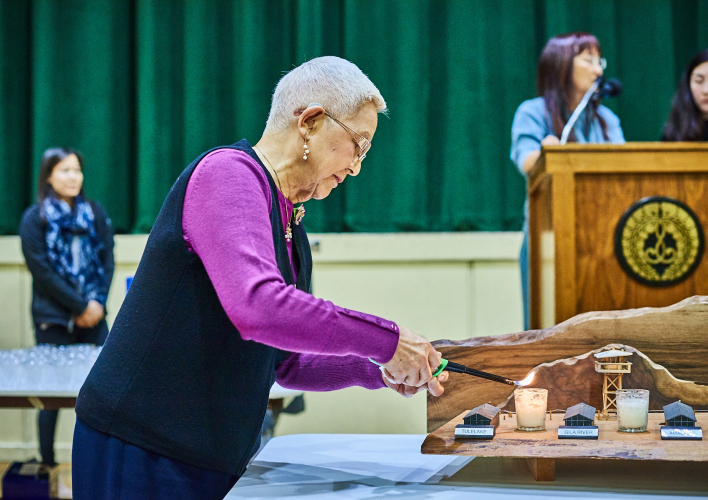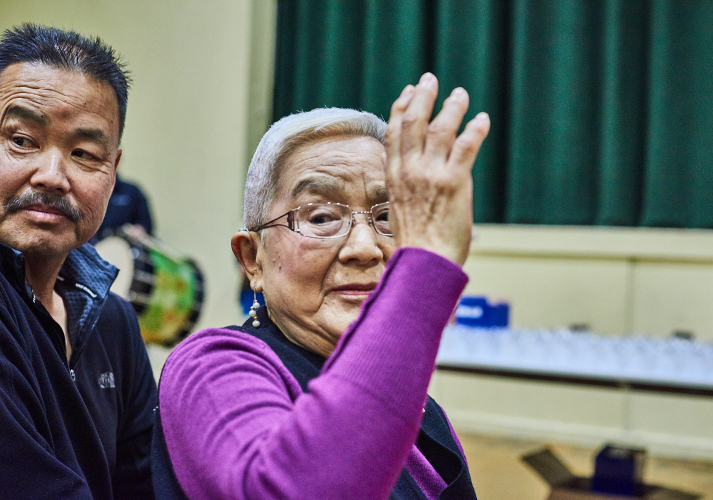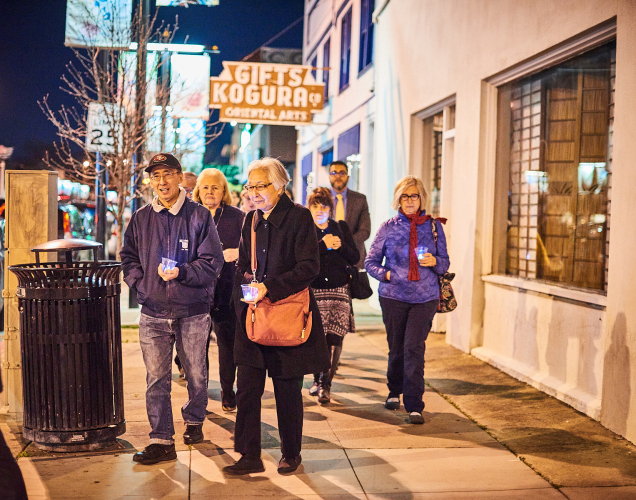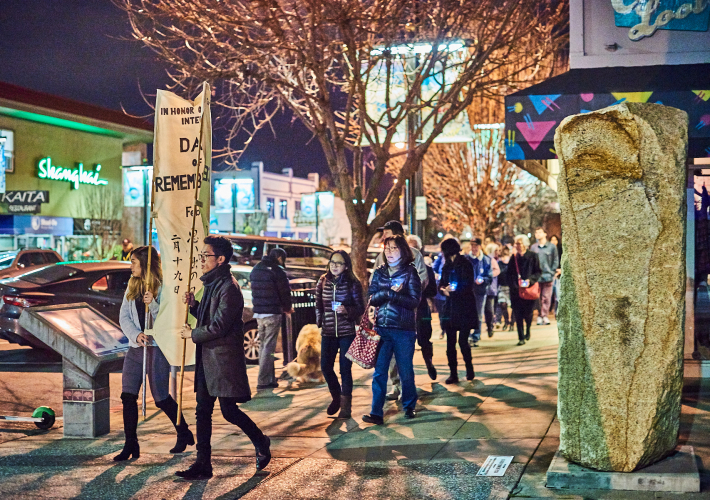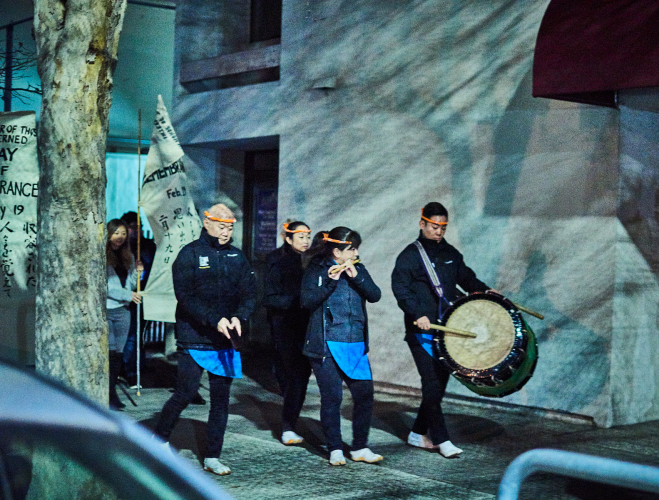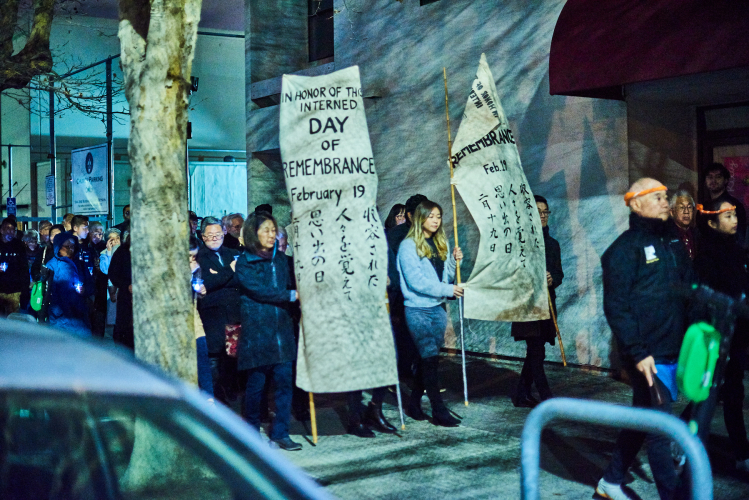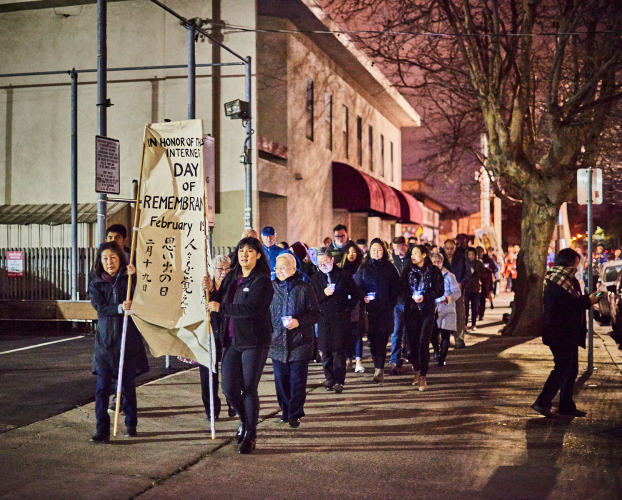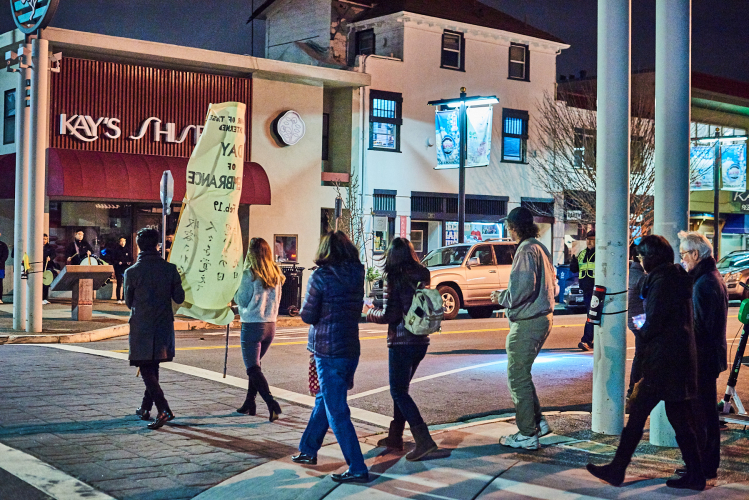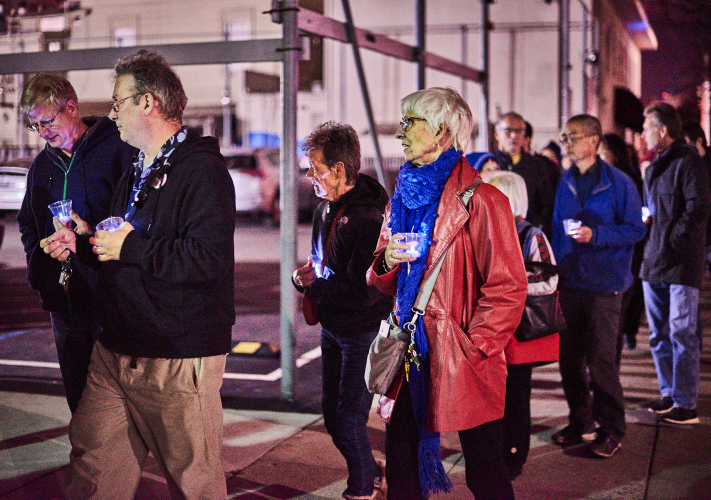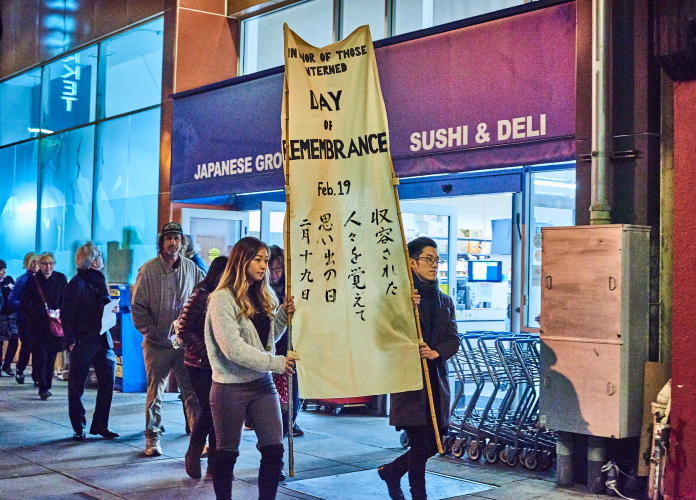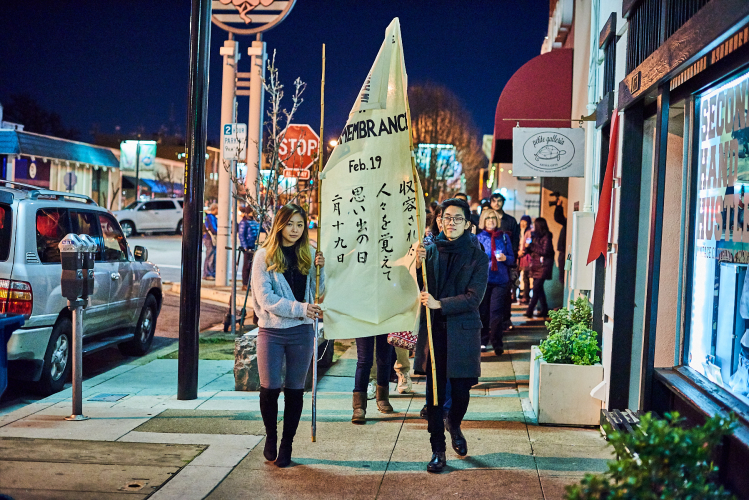From the Open-Publishing Calendar
From the Open-Publishing Newswire
Indybay Feature
Day of Remembrance: Japanese Americans Recall WWII Incarceration
Immigration issues of today parallel the Japanese American experience during WWII, when families were removed from their homes on the U.S. West Coast to distant locations and incarcerated. Racism was, and is, at the core of both. The 39th annual Day of Remembrance on February 17th featured reminiscence, music, and a march through historic San José Japantown that was also a protest of Trump's National Emergency, announced two days earlier.
Photos by Chris Cassell, Pro-Bono Photo, please credit the photographer.
Photos by Chris Cassell, Pro-Bono Photo, please credit the photographer.
As a child, Chizu Omori was incarcerated in the Poston camp on the Colorado River Indian Reservation in Arizona during WWII. She shared her remembrance from a podium in the San José Buddhist Church Betsuin on the 77th anniversary of the signing of Executive Order 9066, commemorated by Japanese Americans with events on both U.S. coasts and even in the midwest.
Attorney Don Tamaki gave insight on Fred Korematsu’s legal challenge to his incarceration during that war. Tamaki served on the legal team that reopened the landmark U.S. Supreme Court case. Korematsu was exonerated in 1983, based on a ruling that the U.S. government had lied in accusing Japanese Americans of threatening American security. Tamaki called Trump’s National Emergency unconstitutional.
A candle-lighting ceremony, with one candle for each of the ten incarceration camps, preceded a march in the neighborhood adjacent the Buddhist temple, with its backdrop of historic buildings. San José Japantown is one of the last three Japantowns in the United States, the others being in San Francisco and Los Angeles. The Japantown in San José is the most authentic in that it wasn’t largely torn down and rebuilt. Many of the earliest buildings still remain; here photographer Chris Cassell captures marchers passing by some of those historic places.
Attorney Don Tamaki gave insight on Fred Korematsu’s legal challenge to his incarceration during that war. Tamaki served on the legal team that reopened the landmark U.S. Supreme Court case. Korematsu was exonerated in 1983, based on a ruling that the U.S. government had lied in accusing Japanese Americans of threatening American security. Tamaki called Trump’s National Emergency unconstitutional.
A candle-lighting ceremony, with one candle for each of the ten incarceration camps, preceded a march in the neighborhood adjacent the Buddhist temple, with its backdrop of historic buildings. San José Japantown is one of the last three Japantowns in the United States, the others being in San Francisco and Los Angeles. The Japantown in San José is the most authentic in that it wasn’t largely torn down and rebuilt. Many of the earliest buildings still remain; here photographer Chris Cassell captures marchers passing by some of those historic places.
Add Your Comments
We are 100% volunteer and depend on your participation to sustain our efforts!
Get Involved
If you'd like to help with maintaining or developing the website, contact us.
Publish
Publish your stories and upcoming events on Indybay.
Topics
More
Search Indybay's Archives
Advanced Search
►
▼
IMC Network


